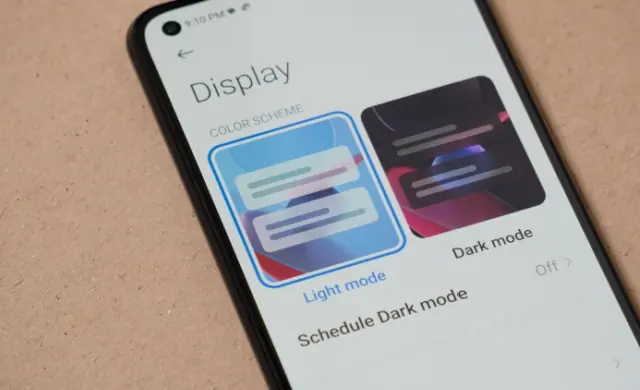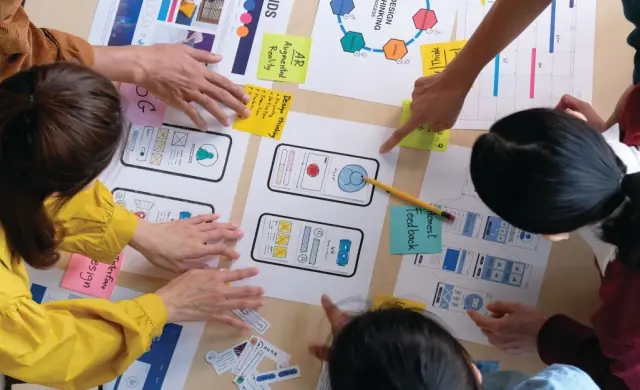Sustainability in UX design is now a key part of creating responsible digital experiences. Whether you’re building websites or apps, designing digital products with sustainability helps users and the planet. Sustainable UX balances usability and performance with eco-friendly interfacing. It’s about making smart web design and development choices to create smooth experiences without wasting energy or resources. This article will explain why sustainability in UX design is so important for businesses today.
We’ll cover why it matters and explore the key principles of sustainable UX design. You’ll also learn about the business benefits of going green, the challenges to expect, and how a UX agency can guide you through the process. By the end, you’ll see how sustainability can improve the user experience and give your business a competitive advantage while promoting eco-friendly interfacing!

Why Sustainability Matters in UX Design
Incorporating sustainability in UX design benefits both the environment and the user experience. Focusing on energy efficiency and reducing digital waste helps UX designers lower the carbon footprint of digital products. For example, speeding up website load times and cutting server requests saves energy and improves environmental impact. At the same time, it makes interactions faster and smoother for users. Designers can also use eco-friendly interfacing options like dark mode to reduce device energy consumption and extend battery life.
Sustainable UX not only cuts environmental harm but also improves usability. Streamlined designs with fewer steps let users complete tasks faster, as shown by usability testing and user testing. This approach reduces data use and increases user satisfaction. Responsive web design ensures products work well on all devices while conserving energy and resources.
For businesses, sustainable UX design offers a competitive edge. More consumers prefer brands that align with their environmental values. By adopting sustainable practices, businesses can attract this audience. It also cuts costs by using resources more efficiently and extending product lifecycles. Focusing on sustainability helps companies build customer loyalty and improve digital experiences. Partnering with a UX agency specializing in sustainability can help businesses stay ahead while meeting user and environmental needs.

Key Principles of Sustainable UX Design
Sustainability in UX design goes beyond aesthetics. It focuses on reducing environmental impact while maintaining performance and improving the user experience. Below are key principles of sustainable UX design and how they benefit businesses and users.
1. Efficiency and Minimalism
Efficiency and minimalism focus on reducing data load by simplifying interactions and minimizing the number of server requests. This cuts down on energy consumption and speeds up page load times. A cleaner, more minimalist design also reduces the cognitive load for users, improving overall usability. By adopting sustainable web design principles, businesses can save on operational costs while offering faster, more user-friendly digital experiences.
2. Dark Mode Design
Using dark mode can significantly lower energy usage on devices with OLED or AMOLED screens. It reduces the need for screen brightness and extends battery life. This not only cuts down on energy consumption but also contributes to device longevity, which reduces electronic waste. Implementing dark mode as an option enhances digital product design by catering to eco-conscious users.
3. User Awareness and Engagement
Informing users about the environmental benefits of their actions helps promote sustainable behaviors. For example, displaying the carbon footprint savings when users choose digital receipts over paper can encourage more eco-friendly choices. By making sustainable options the default in your design, you create a seamless experience that supports sustainability. This engagement also builds a positive brand image that aligns with modern consumer values.
4. Accessibility and Inclusivity
Ensuring digital products are accessible to all, including those with disabilities, extends the product’s utility and lifespan. Inclusive design reaches a broader audience and improves user engagement. By considering diverse cultural contexts and accessibility from the start, businesses create longer-lasting, sustainable products that reduce the need for frequent updates.
5. Lifecycle Thinking
Designing with the entire product lifecycle in mind ensures that digital products can be easily updated without the need for complete overhauls. This reduces resource use and extends the product’s longevity. Planning for a product’s end-of-life, such as easy data migration, further supports sustainability and reduces waste.
6. Renewable and Recyclable Resources
Where physical components are involved, opting for renewable or recyclable materials can greatly reduce the environmental impact. Additionally, hosting digital products on servers powered by renewable energy lowers the carbon footprint of operations, making sustainable UX design a holistic approach to reducing environmental harm
By adopting these principles, businesses can create digital products that not only reduce the environmental impact but also enhance performance and sustainability in the long run.

Benefits of Incorporating Sustainability in UX Design
Incorporating sustainability into UX design benefits both the environment and businesses. Sustainable practices reduce resource use, improve user experience, and build stronger brand reputations. Here are key benefits that show how sustainability in UX design can support both environmental and business goals.
1. Environmental Benefits
Sustainable UX design helps reduce the carbon footprint by cutting down energy use. Practices like dark mode and efficient coding save energy and support broader environmental goals. By adopting sustainable digital products, businesses help reduce their environmental impact.
2. Improved Brand Reputation
Sustainable UX design improves a company’s reputation. More environmentally conscious consumers look for businesses that prioritize eco-friendly solutions. When companies integrate sustainability into their designs, they appeal to a growing market of eco-aware customers.
3. Reduced Operational Costs
Sustainable UX uses minimal designs and efficient resources, which reduces energy costs and lowers server loads. This leads to cost savings while keeping high performance. It also boosts long-term operational efficiency.
4. Enhanced Customer Loyalty
Consumers value sustainability and often pick brands that reflect their values. By using sustainable UX design, businesses can build stronger customer loyalty. Engaging users with eco-friendly choices builds trust and strengthens relationships.
5. Alignment with CSR Goals
Sustainable design aligns with corporate social responsibility (CSR) goals, helping businesses meet their environmental and social commitments. This alignment improves public perception and promotes sustainable business practices.
6. Increased Product Longevity
Sustainable UX design focuses on creating durable products that need fewer updates. By using UX research and lifecycle thinking, companies build products that last longer, reducing the need for frequent redesigns.
7. Competitive Advantage
Companies that offer sustainable digital products gain a competitive edge. As more consumers and industries focus on sustainability, eco-friendly businesses stand out, leading to increased market share.
By adopting these sustainable principles, businesses can help the environment while boosting their operational efficiency, brand loyalty, and overall success.

Challenges in Sustainable UX Design
Designing for sustainability in UX comes with its own set of challenges. While the goal is to reduce environmental impact and enhance user experience, several obstacles can arise. These challenges affect both the technical aspects and the broader adoption of sustainable UX design. Below are some of the key challenges that designers and developers face.
1. Technical Limitations
One of the main hurdles in sustainable UX design is the balance between energy efficiency and maintaining performance. For example, lower energy use can sometimes mean slower processing speeds or reduced functionality, impacting user experience. Finding the right balance requires innovation and efficient design to ensure products perform well while remaining eco-friendly.
2. User Adoption and Behavior
Getting users to adopt sustainable features can be tricky. Many users are resistant to change, especially if they feel eco-friendly options complicate their experience. User experience design must encourage sustainable behavior without disrupting user habits. Informing users of the benefits through UX research can help increase adoption.
3. Economic and Business Decisions
Adopting sustainable digital products often requires upfront investment. Businesses may hesitate due to perceived higher costs, even if the long-term savings are substantial. Decision-makers must balance short-term expenses with long-term gains in both financial savings and brand loyalty.
4. Cultural and Ethical Considerations
Cultural differences can shape how sustainability is perceived and adopted. What works in one region may not resonate in another due to varying values and norms. Additionally, ethical considerations, such as fair labor practices, must align with sustainable UX design to ensure the design contributes to a more sustainable and just world.
5. Design and Implementation
Implementing sustainable design requires meticulous planning and execution. Designers need to ensure that eco-friendly practices do not hinder usability or performance. Additionally, creating designs that are adaptable and long-lasting, rather than disposable, can be challenging but crucial for contributing to a more sustainable future.
By addressing these challenges, businesses can successfully implement sustainable UX design, benefiting both the environment and their bottom line.

Strategies for Implementing Sustainable UX Design
Incorporating sustainability into UX design helps digital products perform well while reducing their environmental impact. Here are key strategies for achieving this.
1. Optimize Resource Use
Reducing energy consumption is a top goal in sustainable UX design. Practices like compressing images and minimizing file sizes improve load times and cut server loads. This saves energy and enhances user experience by speeding up websites.
2. Find Ways to Reduce Waste
Designers can reduce waste by ensuring digital products work on older hardware, extending their lifespan. Using modular design allows updates without overhauls, cutting down digital waste and keeping products relevant longer.
3. Design for Longevity
Sustainable products should last longer and need fewer updates. By focusing on adaptable interfaces and modular design, businesses can avoid frequent redesigns, reducing resource use and supporting long-term sustainability.
4. Promote User Engagement
Designing to educate users about eco-friendly choices boosts the adoption of sustainable features. Showing energy savings from actions helps users engage with sustainability efforts and deepens their connection to the product.
5. Use Eco-Friendly Tools and Services
Using tools powered by renewable energy sources or green hosting services cuts a company’s carbon footprint. These steps, combined with sustainable UX practices, create a greener digital environment while keeping high performance.
By following these strategies, businesses can promote sustainable solutions that not only protect the environment but also improve product efficiency and user satisfaction.

How ScreenRoot Can Help You Implement Sustainable UX Design
Incorporating sustainability in UX design offers businesses two key benefits: reducing environmental impact and increasing brand loyalty and profitability. Using practices like efficient coding, modular design, and renewable energy sources makes digital products eco-friendly while keeping them highly usable. This helps businesses stay competitive and appeal to today’s eco-conscious customers.
At ScreenRoot, known for its commitment to innovative solutions, we believe sustainability should be part of every UX strategy. Our approach helps brands create long-term value by attracting customers who care about the environment. As a top UX research agency and one of Clutch’s leading UX design firms, we offer services like UI/UX audits, UX research, and product innovation, and more. If you’re ready to embrace sustainability, hire a UI/UX agency like ScreenRoot to lead the way! Whether you’re building products for the future or optimizing current ones, we’re here to help.
Explore our work on our Work Page, or reach out via WhatsApp or call 1800 121 5955 (India). You can also contact us through email at [email protected] or use our Contact Form for personalized support. Let’s create digital products that are sustainable, impactful, and profitable!







